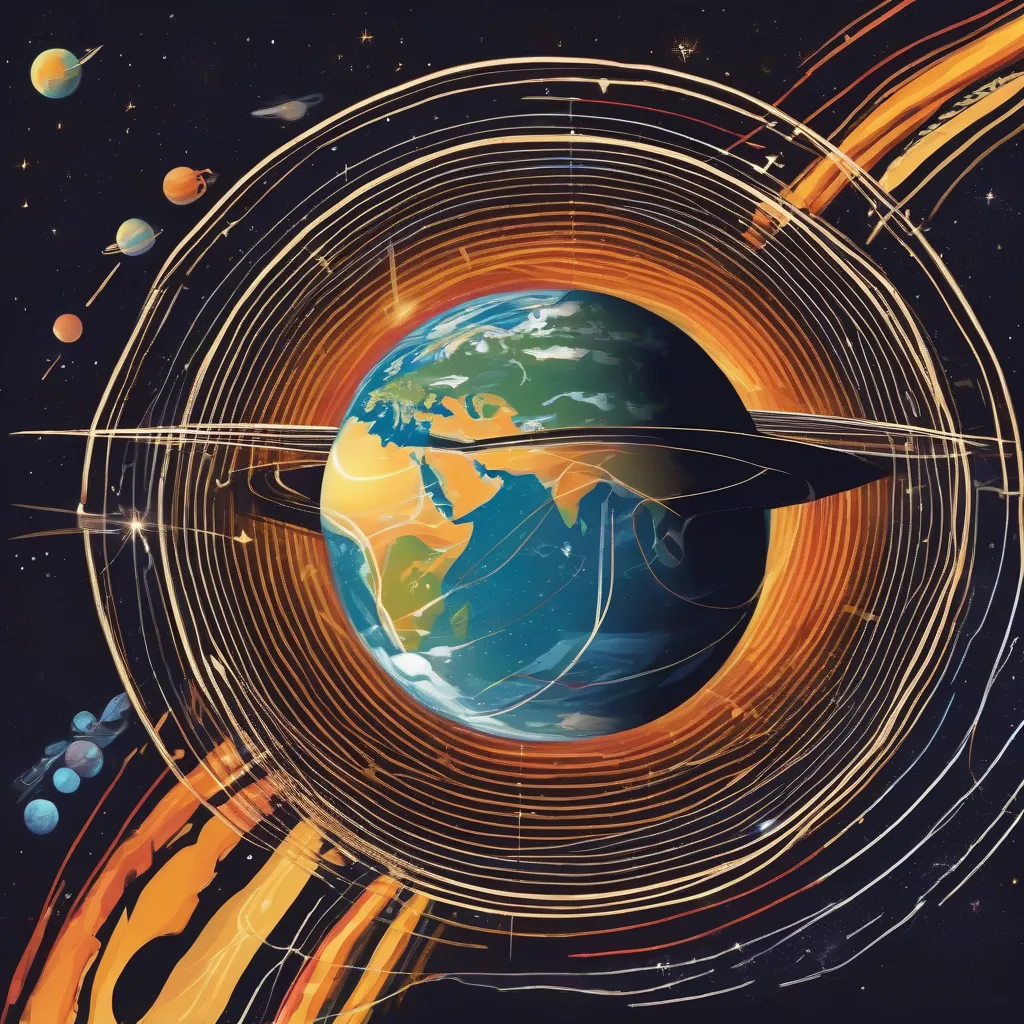Have you ever stood on a beach, gazing at the vast ocean, and felt a sense of awe at the sheer scale of our planet? It’s easy to feel insignificant in those moments, but did you know that we’re all on an incredible, high-speed journey through space? It’s true! The Earth, along with everything on it, is constantly moving. So, just how fast is the Earth traveling? Buckle up, fellow explorers, as we embark on a fascinating journey to uncover the answer and delve into the wonders of our cosmic dance.
The Earth’s Multiple Movements
Before we can clock the Earth’s speed, it’s important to understand that our planet isn’t just hurtling through space in one direction. It’s actually engaged in several different movements simultaneously:
1. Rotation: The Earth spins on its axis, completing one full rotation approximately every 24 hours. This rotation is what gives us day and night.
2. Revolution: The Earth orbits the Sun in an elliptical path, taking approximately 365.25 days to complete one full revolution. This journey is what defines a year.
3. Galactic Orbit: Our solar system, including the Earth, is also moving within the Milky Way galaxy, orbiting its center.
Each of these movements contributes to the Earth’s overall speed, and the numbers are mind-boggling!
Crunching the Numbers: So, How Fast Are We Really Going?
Let’s break down the Earth’s speed based on each type of movement:
1. Rotational Speed:
- At the equator, the Earth’s rotational speed is roughly 1,000 miles per hour (1,600 kilometers per hour). That means if you were standing on the equator, you’d be moving faster than the speed of sound!
- As you move towards the poles, the rotational speed decreases because the circumference of the Earth at those latitudes is smaller.
2. Orbital Speed:
- The Earth zips around the Sun at an average speed of approximately 67,000 miles per hour (107,000 kilometers per hour). That’s about 18.5 miles every second!
3. Galactic Speed:
- The solar system, with Earth in tow, is cruising through the Milky Way at an estimated speed of 490,000 miles per hour (790,000 kilometers per hour).
 Earth Orbiting the Sun
Earth Orbiting the Sun
Putting it into Perspective: A Cosmic Road Trip
To grasp the immensity of these speeds, imagine taking a road trip:
- Driving at the Earth’s rotational speed at the equator, you could travel from New York City to Los Angeles in about 4 hours.
- At our orbital speed, you could reach the Moon in a mere 4 hours.
- And if you could somehow maintain our galactic speed, you’d reach Alpha Centauri, the closest star system to our own, in a mind-boggling 70,000 years!
Why Don’t We Feel It? The Illusion of Stillness
You might be wondering, “If we’re moving so fast, why don’t we feel it?” The answer lies in the concept of inertia and the fact that we’re traveling at a relatively constant speed. Just like when you’re on a smooth airplane ride and don’t feel the motion until there’s turbulence, we don’t feel the Earth’s movement because it’s consistent.
Travel Tips from a Cosmic Perspective
This newfound understanding of Earth’s speed can add a fascinating layer to your travel experiences:
- Sunrise and Sunset Appreciation: Next time you witness a breathtaking sunrise or sunset, remember that it’s not the Sun moving, but rather Earth’s rotation that creates this daily spectacle.
- Stargazing Adventures: Venture out to a dark sky location far from city lights. As you gaze up at the stars, consider that you’re looking at light that traveled for millions, even billions of years to reach your eyes.
- Embrace the Journey: Just as the Earth is on a constant voyage through space, embrace the journeys you take in your own life. Each trip is an opportunity for discovery, growth, and wonder.
 Stargazing Under the Night Sky
Stargazing Under the Night Sky
FAQs: Your Cosmic Travel Queries Answered
Q: Does the Earth’s speed ever change?
A: While the Earth’s speed is relatively constant, there are slight variations due to factors like the gravitational pull of other celestial bodies and the elliptical shape of our orbit.
Q: What would happen if the Earth suddenly stopped spinning?
A: It would be catastrophic! The inertia from such a sudden stop would cause massive earthquakes, tsunamis, and extreme weather events.
Q: How do scientists measure the Earth’s speed?
A: Scientists use a variety of sophisticated instruments and techniques, including telescopes, spacecraft observations, and Doppler shift measurements to determine the Earth’s speed in relation to other objects in space.
Explore More with Travelcar.edu.vn
Want to delve deeper into the wonders of travel, both earthly and cosmic? Visit travelcar.edu.vn for more insightful articles and inspiration for your next adventure.